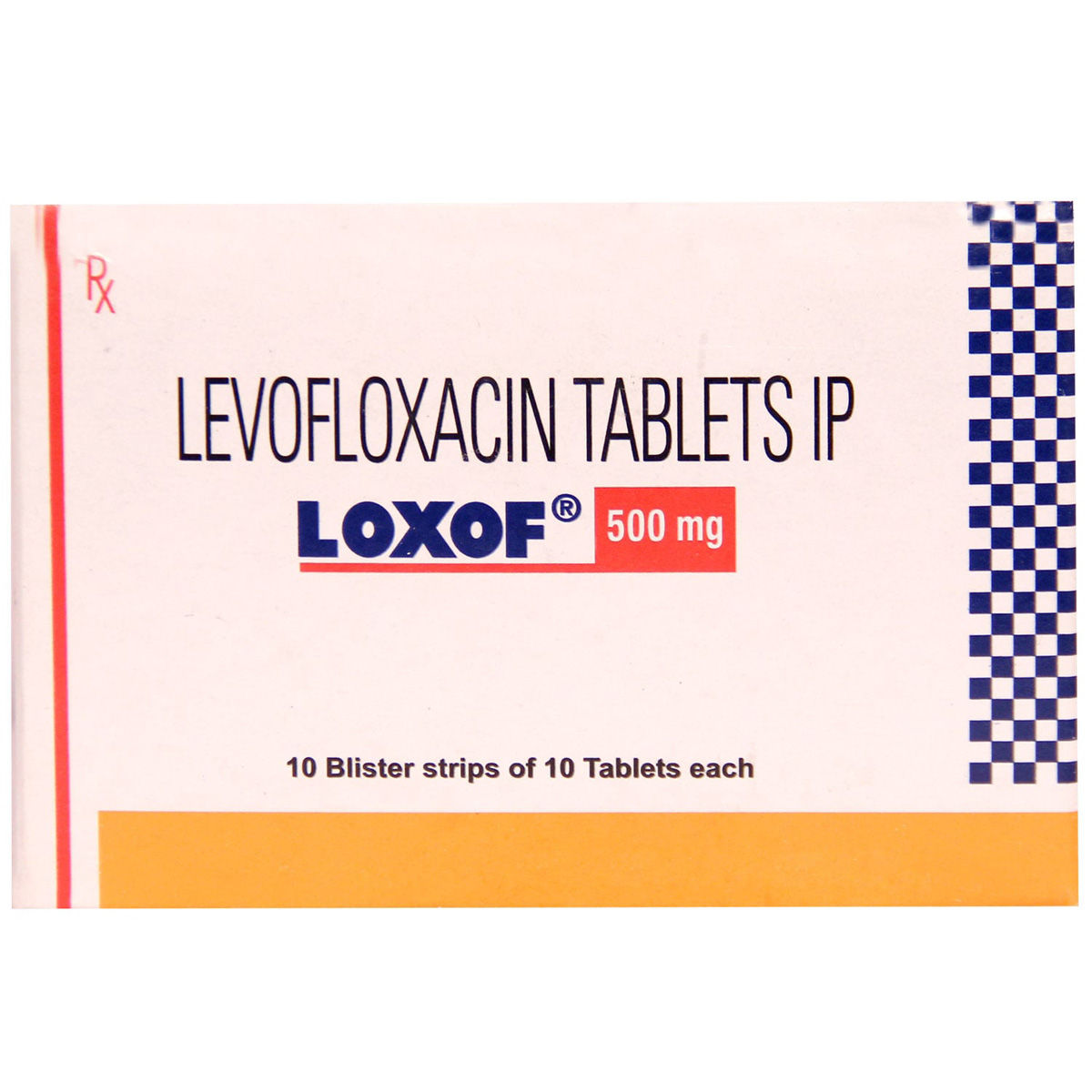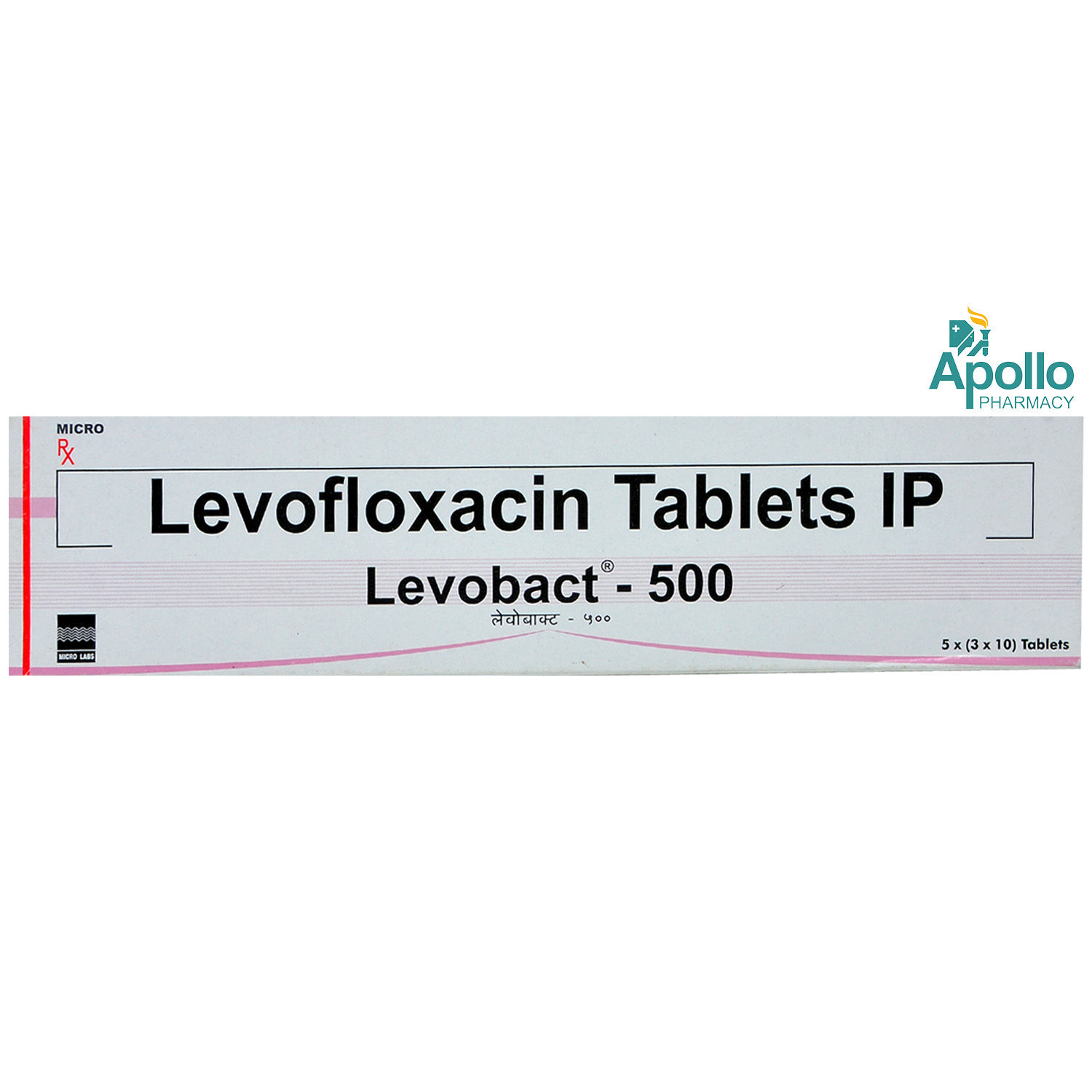Tavanic 500 mg Tablet 5's

₹441.49*
MRP ₹490.54
10% off
₹416.96*
MRP ₹490.54
15% CB
₹73.58 cashback(15%)
Free Delivery
With Circle membership
(Inclusive of all Taxes)
This offer price is valid on orders above ₹800. Apply coupon PHARMA10/PHARMA18 (excluding restricted items)
Know Your Delivery Time
Provide Delivery Location
Available Offers
 Prescription drug
Prescription drugWhats That

Secure Payment

India's Most Trusted Pharmacy

Genuine Products
Composition :
Manufacturer/Marketer :
Consume Type :
Return Policy :
Expires on or after :
About Tavanic 500 mg Tablet
Tavanic 500 mg Tablet is an antibiotic that belongs to the third generation of fluoroquinolones. It is a highly effective antibiotic that works against a variety of bacteria. Tavanic 500 mg Tablet is used in a variety of bacterial infections, most importantly acute pneumonia (Lung infection), bronchitis (Inflammation of lung passages), skin infections, as well as urinary tract infections. A bacterial infection is a condition in which bacteria grow in the body and cause infection. It can target any body part and multiple very quickly.
Bacteria that are dangerous can make you sick and replicate in your body quickly. Harmful bacteria create chemicals known as toxins that can harm the tissue and cause you sick. Tavanic 500 mg Tablet sticks to enzymes (Topoisomerase IV & DNA gyrase) responsible for the division of bacteria & stop the process of multiplication of bacteria & hence kills bacteria.
The dose of Tavanic 500 mg Tablet can vary depending on your condition and the severity of the infection. Tavanic 500 mg Tablet may cause common side effects like nausea, vomiting, indigestion, diarrhoea, constipation, trouble sleeping, and allergy. These side effects do not require immediate attention and resolve eventually. Nevertheless, if the side effects are persistent, contact your doctor.
Before starting Tavanic 500 mg Tablet, please inform your doctor if you have any allergy (against any antibiotic), kidney or liver problems. Do not take Tavanic 500 mg Tablet on your own as self-medication may lead to antibiotic resistance in which antibiotics fail to act against specific bacterial infections. And also, if prescribed by your doctor Tavanic 500 mg Tablet is safe to use during pregnancy and breastfeeding.
Uses of Tavanic 500 mg Tablet
Directions for Use
Medicinal Benefits
Tavanic 500 mg Tablet is an antibiotic that is used to treat bacterial infections resulting in pneumonia (Fluid build up in the lungs), urinary tract infection, bladder infection, prostate gland infection as well as skin infections. Tavanic 500 mg Tablet inhibits the growth of bacteria that are then destroyed by the immune cells of our body. Tavanic 500 mg Tablet also kills bacteria by disrupting their inner cellular contents thus fights infection, with lesser chances of causing bacterial resistance to it as compared to other antibiotics.
How Tavanic 500 mg Tablet Works
Storage
- Prepare for a restful night's sleep: Develop a calming pre-sleep routine, like reading or meditation, to help your body relax and prepare for sleep.
- Create a sleep-conducive Environment: Make bedroom a sleep haven by ensuring it is quiet, dark and calm.
- Follow a Sleep Schedule: Go to bed and get up at the same time every day to help regulate your body's internal clock and increase sleep quality.
- Try relaxing techniques like deep breathing, mindfulness meditation and any others.
- Limit stimulating activities before bedtime: Avoid stimulating activities before bedtime to improve sleep quality.
- Monitor Progress: Keep track of your sleep patterns to identify areas for improvement.
- Consult a doctor if needed: If these steps don't improve your sleep, consult a doctor for further guidance and therapy.
- Hydrate your body: Drink enough water to prevent dehydration and headaches.
- Calm Your Mind: Deep breathing and meditation can help you relax and relieve stress.
- Rest and Recharge: Sleep for 7-8 hours to reduce headache triggers.
- Take rest: lie down in a quiet, dark environment.
- Cold or warm compresses can help reduce tension.
- Stay Upright: Maintain good posture to keep symptoms from getting worse.
- To treat headaches naturally, try acupuncture or massage therapy.
- Over-the-counter pain relievers include acetaminophen and ibuprofen.
- Prescription Assistance: Speak with your doctor about more substantial drug alternatives.
- Severe Headaches: Seek emergency medical assistance for sudden, severe headaches.
- Frequent Headaches: If you get reoccurring headaches, consult your doctor.
- Headaches with Symptoms: Seek medical attention if your headaches include fever, disorientation, or weakness.
- Inform your doctor about dizziness symptoms. They may adjust your medication regimen or prescribe additional medications to manage symptoms.
- Follow your doctor's instructions for taking medication, and take it at the same time every day to minimize dizziness.
- When standing up, do so slowly and carefully to avoid sudden dizziness.
- Avoid making sudden movements, such as turning or bending quickly, which can exacerbate dizziness.
- Drink plenty of water throughout the day to stay hydrated and help alleviate dizziness symptoms.
- If you're feeling dizzy, sit or lie down and rest until the dizziness passes.
- Track when dizziness occurs and any factors that may trigger it, and share this information with your doctor to help manage symptoms.
- Inform your doctor about the nausea and discuss possible alternatives to the medication or adjustments to the dosage.
- Divide your daily food intake into smaller, more frequent meals to reduce nausea.
- Opt for bland, easily digestible foods like crackers, toast, plain rice, bananas, and applesauce.
- Avoid certain foods that can trigger nausea, such as fatty, greasy, spicy, and smelly foods.
- Drink plenty of fluids, such as water, clear broth, or electrolyte-rich beverages like coconut water or sports drinks.
- Use ginger (tea, ale, or candies) to help relieve nausea.
- Get adequate rest and also avoid strenuous activities that can worsen nausea.
- Talk to your doctor about taking anti-nausea medication if your nausea is severe.
- Record when your nausea occurs, what triggers it, and what provides relief to help you identify patterns and manage your symptoms more effectively.
- Take medications with food (if recommended): It can help prevent stomach distress and indigestion.
- Eat smaller, more frequent meals: Divide daily food intake into smaller, more frequent meals to ease digestion.
- Avoid trigger foods: Identify and avoid foods that trigger indigestion, such as spicy, fatty, or acidic foods.
- Stay upright after eating: Sit or stand upright for at least 1-2 hours after eating to prevent stomach acid from flowing into the oesophagus.
- Avoid carbonated drinks: Avoid drinking carbonated beverages, such as soda or beer, which can worsen indigestion.
- Manage stress: To alleviate indigestion, engage in stress-reducing activities like deep breathing exercises or meditation.
- Consult a doctor if needed: If indigestion worsens or persists, consult a healthcare professional to adjust the medication regimen or explore alternative treatments.
- Skin rash caused by allergies is due to irritants or allergens. Therefore, avoid contact with such irritants.
- Consult your doctor for proper medication and apply an anti-itch medication. Follow the schedule and use the medication whenever needed.
- Protect your skin from extreme heat and try to apply wet compresses.
- Soak in the cool bath, which gives a soothing impact to the affected area.
What if I have taken an overdose of Tavanic 500 mg Tablet
Drug Warnings
Drug-Drug Interactions
Drug-Drug Interactions
Login/Sign Up
The combination of Amiodarone and Tavanic 500 mg Tablet may significantly raise the risk of an abnormal heart rhythm.
How to manage the interaction:
Despite the fact that Amiodarone and Tavanic 500 mg Tablet interact, it can be taken if prescribed by a doctor. If you get dizziness, lightheadedness, fainting, or fast or racing heartbeats, consult a doctor. Do not stop taking any medications without visiting a doctor.
Combining Tavanic 500 mg Tablet with Disopyramide can increase the risk of irregular heart rhythm .
How to manage the interaction:
Taking Tavanic 500 mg Tablet with Disopyramide is not recommended, as it can result in an interaction, it can be taken if your doctor has advised it. However, if you experience any symptoms like sudden dizziness, lightheadedness, fainting, or fast or pounding heartbeats, contact your doctor immediately. Do not discontinue any medications without first consulting your doctor.
Taking Tavanic 500 mg Tablet with Ziprasidone can increase the risk of abnormal heart rhythm.
How to manage the interaction:
Taking Tavanic 500 mg Tablet with Ziprasidone is not recommended, but it can be taken together if prescribed by a doctor. However, consult your doctor if you experience sudden dizziness, lightheadedness, fainting, shortness of breath. Do not discontinue any medications without consulting a doctor.
Using sotalol together with Tavanic 500 mg Tablet can increase the risk of an irregular heart rhythm that may be serious. The risk increases in patients with a history of heart illness or electrolyte imbalance.
How to manage the interaction:
Taking Tavanic 500 mg Tablet with Sotalol is generally avoided as it can result in an interaction, it can be taken if your doctor has advised it. If you experience sudden dizziness, lightheadedness, fainting, or fast or pounding heartbeats, contact a doctor immediately. Do not discontinue any medications without consulting a doctor.
coadministration of Tavanic 500 mg Tablet and Deflazacort can cause tendinitis (inflammation of the thick fibrous cords that attach muscle to bone) and tendon rupture (injury to the soft tissue that connect muscle to bone).
How to manage the interaction:
Although there is an interaction, Tavanic 500 mg Tablet can be taken with deflazacort if prescribed by the doctor. However, if you experience pain, swelling at the back of the ankle, biceps, shoulder, hand, or thumb, consult a doctor immediately. Avoid exercise or use of the affected area. Do not stop using any medications without talking to a doctor.
Taking Tavanic 500 mg Tablet with ceritinib increases the risk of an abnormal heart rhythm.
How to manage the interaction:
Although there is an interaction between Tavanic 500 mg Tablet with ceritinib, it can be taken if a doctor has advised it. However, if you experience sudden dizziness, lightheadedness, fainting, shortness of breath, or rapid heartbeat, get medical help immediately. Do not discontinue any medications without consulting a doctor.
Co-administration of Tavanic 500 mg Tablet with mifepristone can increase the risk of irregular heart rhythms.
How to manage the interaction:
Taking Tavanic 500 mg Tablet with mifepristone together can result in an interaction, it can be taken if a doctor has advised it. However, contact a doctor immediately if you experience any symptoms such as dizziness, lightheadedness, fainting, shortness of breath, or irregular heartbeat. Do not discontinue any medications without consulting a doctor.
Coadministration of Tavanic 500 mg Tablet and Teriflunomide can increase the risk of liver issues.
How to manage the interaction:
Co-administration of Tavanic 500 mg Tablet along with teriflunomide can lead to an interaction, it can be taken if recommended by a doctor. If you experience fever, chills, joint pain or swelling, unusual bleeding or bruising, skin rash, itching, loss of appetite, fatigue, nausea, vomiting, abdominal pain, dark-colored urine, light-colored stools, and/or yellowing of the skin or eyes, contact a doctor right away. Do not discontinue any medications without consulting a doctor.
Taking Tavanic 500 mg Tablet with cabozantinib increases the risk of an abnormal heart rhythm.
How to manage the interaction:
Concomitant administration of Tavanic 500 mg Tablet with cabozantinib can result in an interaction, it can be taken if a doctor has advised it. However, if you experience abrupt dizziness, lightheadedness, fainting, shortness of breath, or rapid heartbeat, get medical help immediately. Do not discontinue any medications without consulting a doctor.
Taking Tavanic 500 mg Tablet with fingolimod increases the risk of an abnormal heart rhythm.
How to manage the interaction:
Concomitant administration of Tavanic 500 mg Tablet with fingolimod can result in an interaction, it can be taken if a doctor has advised it. However, if you experience abrupt dizziness, lightheadedness, fainting, shortness of breath, or rapid heartbeat, get medical help immediately. Do not discontinue any medications without consulting a doctor.
Drug-Food Interactions
Drug-Food Interactions
Login/Sign Up
Diet & Lifestyle Advise
Dairy products such as milk and yogurt must be avoided for at least 2 hours before and after taking the medicine.
Maintaining good hygiene is essential.
Have more fiber-enriched food in your diet, as it can be easily digested by your gut bacteria, which helps stimulate their growth. Thus, fiber-rich foods may help restore healthy gut bacteria after a course of antibiotics.
After taking the full course of levofloxacin, probiotics should be taken in order to recover healthy bacteria that could have been destroyed in the intestines. The risk of antibiotic-associated diarrhea by antibiotic treatment can be minimized by taking probiotics.
Habit Forming
Therapeutic Class
Tavanic 500 mg Tablet Substitute

Superquin 500 mg Tablet 5's
by Others
₹10.00per tabletLevoflox 500 Tablet 10's
by Others
₹9.05per tabletLoxof 500 Tablet 10's
by Others
₹9.05per tabletL Cin 500 Tablet 10's
by Others
₹9.05per tabletLevoday 500Mg Tablet 10's
by Others
₹9.05per tablet
Product Substitutes
Alcohol
Safe if prescribed
Alcohol is not known to cause any unpleasant side effects if taken along with Tavanic 500 mg Tablet. But intake of alcohol with Tavanic 500 mg Tablet may damage your liver. So intake of Tavanic 500 mg Tablet should be avoided with Tavanic 500 mg Tablet.
Pregnancy
Caution
It is not known whether Tavanic 500 mg Tablet will affect pregnant women or fetus or not. Hence, the intake of Tavanic 500 mg Tablet should be avoided if you are pregnant or planning to become pregnant unless your doctor recommends otherwise.
Breast Feeding
Caution
Before taking this drug doctor's consultation is mandatory.Tavanic 500 mg Tablet is excreted in human milk. But the amount of Tavanic 500 mg Tablet absorbed by the nursing infant is unknown.
Driving
Caution
After taking this drug, you can experience side effects like feeling dizzy, tired, and a spinning sensation (vertigo) or alterations in your vision. If this occurs, do not drive or perform any work that requires high level of concentration.
Liver
Caution
Tavanic 500 mg Tablet to be taken with caution, especially if you have a history of liver diseases/conditions. The dose may have to be adjusted by your doctor.
Kidney
Caution
Tavanic 500 mg Tablet to be taken with caution, especially if you have a history of Kidney diseases/conditions. The dose may have to be adjusted by your doctor.
Children
Safe if prescribed
Tavanic 500 mg Tablet can be given to children but under medical supervision. Tavanic 500 mg Tablet is prescribed to the children to treat complicated urinary tract infections, anthrax infection or plague infection.
FAQs
Tavanic 500 mg Tablet is used to treat bacterial infections, including acute pneumonia (lung infection), bronchitis (inflammation of lung passages), skin infections, as well as urinary tract infections.
Tavanic 500 mg Tablet inhibits the growth of bacteria that are then destroyed by the immune cells of our body. Tavanic 500 mg Tablet also kills bacteria by disrupting their inner cellular contents thus helps fight infection.
Diarrhoea may be caused by Tavanic 500 mg Tablet. It is an antibiotic that destroys dangerous bacteria by killing them. Nonetheless, it also affects the beneficial bacteria in your stomach or gut and causes diarrhoea. Talk to your doctor about it if you have serious diarrhoea.
It is recommended not to stop taking this drug without completing the course as prescribed by a doctor. If a patient stops taking this drug by himself/herself, It may be difficult to treat future infections with Tavanic 500 mg Tablet due to resistance that microbes develop on non-completion of drug course.
It is safe to use Tavanic 500 mg Tablet alongside contraceptives; no harmful/negative interaction has been reported between them.
Before starting Tavanic 500 mg Tablet, discuss your medical history, allergies, current medications, and any concerns with your physician.
To ensure safe usage of Tavanic 500 mg Tablet, follow these simple steps. Take the recommended dose, never take an overdose, and inform your doctor if you become pregnant while using this medication. Monitor your body's response and report any side effects. Also, avoid consuming alcohol while taking this medication. By following these guidelines, you'll maximize the benefits of Tavanic 500 mg Tablet and protect your health.
Tavanic 500 mg Tablet is generally considered safe when taken as directed by your doctor. However, like all medications, it may cause side effects, and its safety depends on individual factors, such as your medical history, current health, and other medications you're taking. Always follow your doctor's instructions and advice.
Take the missed dose as soon as you remember unless it's almost time for your next dose. In this case, skip the missed dose and take your next dose at the regular time. Never take a double dose to make up for a missed one.
Although Tavanic 500 mg Tablet is generally safe, it's essential to be aware that it may carry a small risk of muscle damage. However, this risk can be minimised with proper use and medical supervision.
No, Tavanic 500 mg Tablet is ineffective against viral infections such as the common cold or flu. It is specifically designed to target and treat bacterial infections.
It's best to consult your doctor before taking painkillers with Tavanic 500 mg Tablet. Some painkillers may interact with Tavanic 500 mg Tablet, so your doctor can advise on safe options.
It's recommended to avoid or limit alcohol consumption while taking Tavanic 500 mg Tablet, as alcohol may interact with the medication and increase the risk of side effects. Consult your doctor for personalized advice.
Tavanic 500 mg Tablet is generally well-tolerated, but some people may experience side effects like nausea, vomiting, and digestive issues. These effects are usually mild and temporary. If you experience any side effects, it's always best to consult your doctor.
Country of origin
Manufacturer/Marketer address
Disclaimer
Author Details
We provide you with authentic, trustworthy and relevant information






















